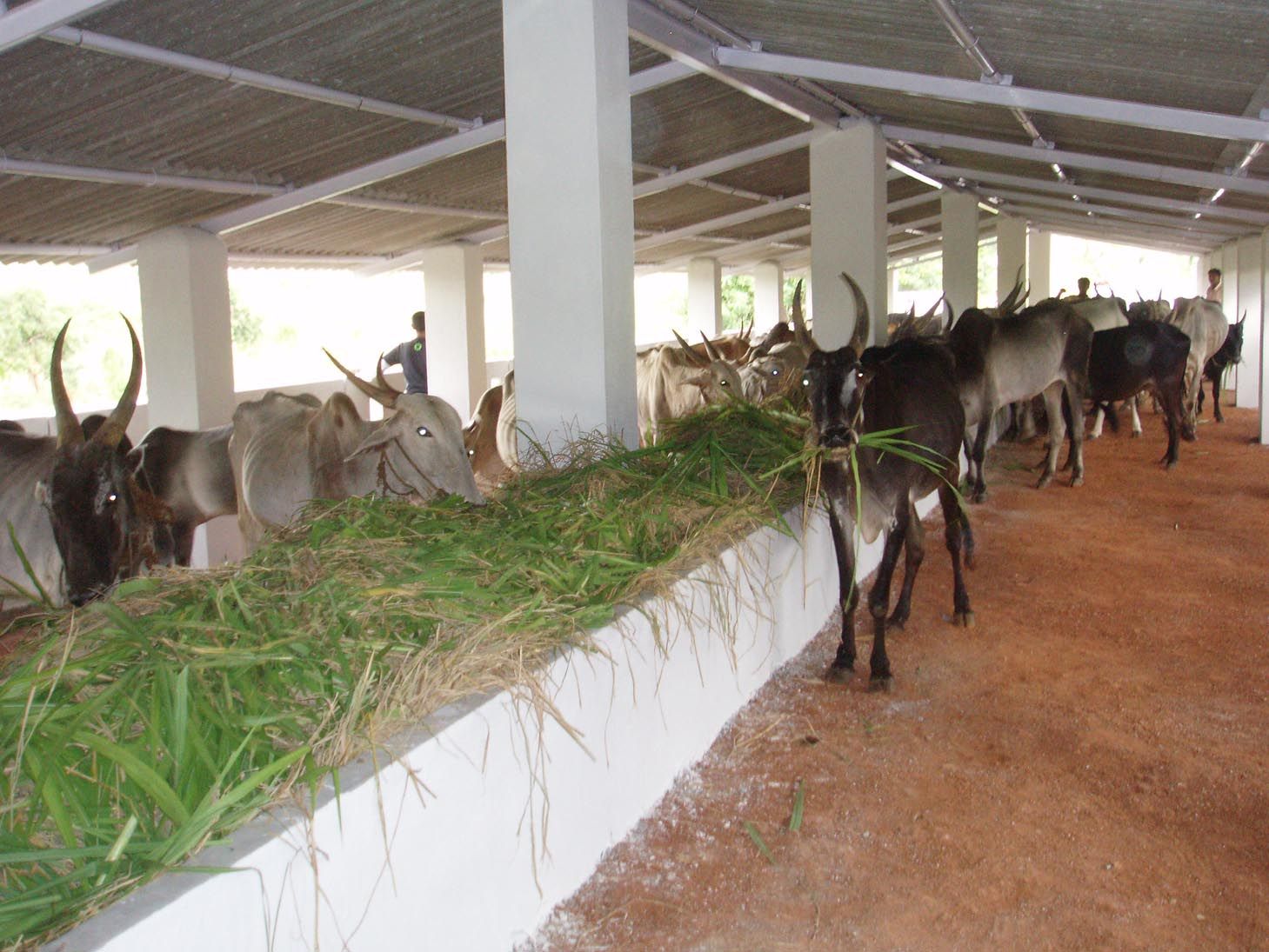Dry Cow Shed Design
By constructing water trough the loss of fodder will be less. Stall dividers or loops should be installed as boundaries.
The diagram shows open-front free stalls with rubber- filled mattresses.

Dry cow shed design. The wall of the shed should be 5 feet height and is surrounded on three sides. About Press Copyright Contact us Creators Advertise Developers Terms Privacy Policy Safety How YouTube. Darren Carty on 7.
The ideal dimensions of a cubicle for Holstein cows of an average size are 125 m 41 foot wide and 275 m 9 foot head to head or head towards the alley or 325 m 107 foot long against a wall. If the animals are allowed free movement across the standing dung and urine will be dropped all over may affect hygiene and make cleaning more difficult and injuries may be caused eg. Lying time and frequency Lying down has a very high priority among cattle.
Construction of a cubicle shed for cows is a major project requiring significant design and financial planning before construction begins. Dry cows or special needs cows should have a stall width that is 6 inches wider than the other stalls. Cubicle shed plus slurry storage could cost between d1200 and d1500 per cow place which is approximately d200000 for 150 cow places.
Milk Production and Dimensions. Number and size of plots must be according to cropping rotationsplan. Each cow has their own place in the resting area called cubicle.
Special Needs Cows. The slope on the stall is 025 inches per foot. Before we look at the design and dimensions of cubicles it is important to look at the lying down and getting up behavior of cows.
Providing a dry comfortable resting area for dairy cattle is essential to their health well being and performance. Considerations when designing a cubicle house include. 30 inches of bunk space for cows from 21 days before to 21 days after calving.
Well designed and managed dairy cow freestalls cubicles can reduce excessive standing allow more efficient rumination improve cleanliness and minimize injury. These lengths are necessary in order to provide the cow with sufficient head room. The shed built at the end of 2020 has been integral in allowing Shane Moore to expand flock numbers while not interfering with off-farm employment.
This is a place for the cows to relax and sleep during the night. Partitioning within the shed keeps the calves separated from the adult cattle and also restricts the movement of the adult cattle across the standing. Building a cow shed.
A soft bed - sand-bedded freestalls or a comfortable clean and dry bedded pack. A cow normally lies down for 10 14 hours per day spread out over 15-20 periods. The water space should be 10 feet and the water should be clean and fresh.
Sufficient space to rest in a well-designed stall or lying area free of competition. The optimum temperature for a dairy cow is around 5C so this is critical to maximise production and welfare in the building. Layout of plots must be such that it is easy to irrigate without soil erosion.
The Wisconsin Blueprint lists four main characteristics of excellent transition barn design. Area of the feed should be 2-2 ½ feet space. By one animal trampling anothers udder.
Shed for the cattle. There are two main ways of moving air naturally. The key aim is to replace the moisture laden air from respiration with cool fresh air.
The cubicles must be covered with a roof made of iron sheets Mabati grass thatch or makuti. The table shows variations in stall dimensions to meet the needs of Holsteins - first-lactation heifers mature milking cows and dry cows. Operation on farm must be easy and economic to carry out.
The cooler the cow the more she lays down and the more milk she will produce. Cows will milk better with comfortable cubicles. The roof must be high enough so that it cannot be eaten by a cow if it is made of grass or if hay is stored under it.
Loops will help dictate how the cow stands where the cow defecates and how the cow enters and exits the stall Anderson 2008. All plots must be well connected to roads and irrigation channels. Cubicle design for dairy cows.
Cows typically rest 10 to 14 hours per day in five or more resting bouts. Dairy cows prefer to lie down when ruminating.
Small Scale Dairy Calf And Cattle Housing Cattle Housing Beef Cattle Farm Cow
Dairy Cow Comfort Free Stall Dimensions Dairy Barn Designs Dairy Cattle Dairy Cows
Fabric Buildings By Calhoun Super Structure Home Cattle Barn Farm Cow Beef Cattle Barn Plans




Post a Comment for "Dry Cow Shed Design"